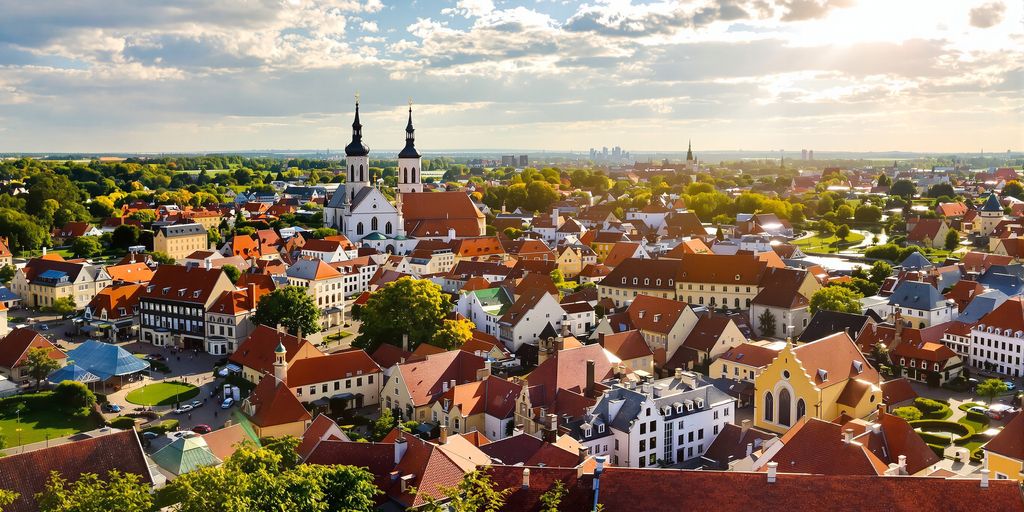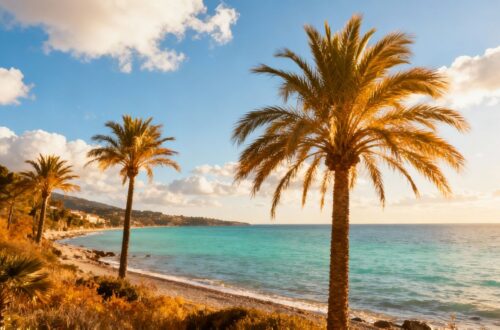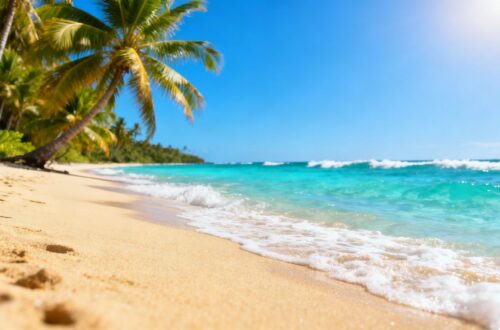Planning your very first trip to Germany can feel a bit overwhelming, right? It’s a country packed with history, culture, and some seriously stunning scenery, from buzzing cities to quiet countryside. Figuring out the best city to visit in Germany for first time travelers is key to a great experience. We’ve put together a little guide to help you decide where to start your German adventure, covering some of the most popular and rewarding spots.
Key Takeaways
-
Berlin offers a mix of history, art, and a vibrant modern scene, making it a top choice for many first-time visitors.
-
Munich provides a taste of traditional Bavarian culture, famous for its beer gardens, festivals, and proximity to the Alps.
-
Hamburg boasts impressive architecture, a lively waterfront, and a strong foodie culture.
-
Dresden is known for its beautifully reconstructed Baroque architecture and rich cultural heritage.
-
For a classic fairytale experience, consider towns like Rothenburg ob der Tauber, though they might be better suited for shorter stays within a larger itinerary.
Berlin
Berlin is a city that really grabs you. It’s got this incredible energy, a mix of old and new that you feel the moment you arrive. After the Wall came down, it’s transformed into something truly special, a place buzzing with creativity and history.
When you’re there, you’ll see all the famous spots, of course. The Brandenburg Gate is pretty iconic, and the Reichstag building is impressive. You can also check out museums like the Pergamon or the Neues Museum to see some amazing ancient artifacts. But Berlin is more than just its landmarks.
What makes Berlin stand out are those unique experiences you can only find there. Think about visiting Tempelhofer Feld, which used to be an airport and is now this huge park where people do all sorts of things, from flying kites to gardening. Or if you’re into art, check out the Boros Collection, housed in an old World War II bunker, or catch a show at Silent Green, a former crematorium that’s now a cool cultural spot. On a warm day, the Badeschiff, a floating pool on the Spree River, is a great place to cool off.
Street art is also a big deal here. You can even take a walking tour with someone who actually does graffiti to see the city’s vibrant art scene up close. Places like Urban Nation, which is basically the world’s first museum dedicated to street art, show just how much this city embraces it. Honestly, Berlin feels like a work in progress, a canvas that’s always being painted on.
Berlin offers a really deep dive into modern German history and culture. It’s a city that doesn’t shy away from its past but uses it as a springboard for what’s next. You can feel that constant evolution.
Here’s a quick look at some must-dos:
-
Visit iconic landmarks: Brandenburg Gate, Reichstag Building, Checkpoint Charlie.
-
Explore world-class museums: Pergamon Museum, Neues Museum.
-
Experience unique cultural spots: Tempelhofer Feld, Boros Collection, Silent Green, Badeschiff.
-
Discover the street art scene: Take a tour or visit Urban Nation.
-
Enjoy the food and nightlife: Berlin has a huge variety of restaurants and bars.
Munich

One of the first things you’ll notice is the sheer amount of green space. The Englischer Garten is massive, like Central Park but with more beer gardens and people surfing on a river wave – seriously! It’s a fantastic spot to just relax, people-watch, or even catch some street performers. For art lovers, the city has a cluster of museums called the Pinakotheken, which house everything from old masters to more contemporary pieces. And if you’re into cars, the BMW Museum is a must-see, even if you’re not a huge car person; the building itself is pretty cool.
When it comes to food and drink, Munich really shines. You absolutely have to experience a traditional beer hall, and the Hofbräuhaus is probably the most famous. While it can get pretty crowded with tourists, it’s still a fun place to grab a giant beer (a ‘Maß’) and soak in the atmosphere, especially if there’s live music. For a more local feel, check out the Viktualienmarkt, a bustling outdoor market where you can grab fresh produce, snacks, and find a spot in the attached beer garden. Don’t leave without trying a giant pretzel, maybe with some Obatzda (a cheesy spread).
Here are a few things you shouldn’t miss:
Marienplatz: This is the central square, home to the stunning Neues Rathaus (New Town Hall) with its famous Glockenspiel. The hourly chime show is a classic Munich experience.
Munich Residenz: This former royal palace is huge and offers a glimpse into the opulent lives of Bavarian rulers. It’s a bit overwhelming with all the gold, but impressive nonetheless.
Frauenkirche: The iconic twin-towered cathedral is a symbol of the city. You can often climb one of the towers for a great view over Munich.
Munich offers a really solid introduction to German culture, especially the Bavarian side of things. It’s a city that feels both grand and approachable, with a friendly atmosphere that makes you feel welcome. Plus, it’s a great jumping-off point for day trips to places like Neuschwanstein Castle or the Alps.
Getting around is pretty easy. The public transport system is efficient, and many of the main sights are within walking distance of each other, especially in the city center. Munich truly offers a taste of Bavarian charm and a lively urban experience.Munich, the capital of Bavaria, is a city that really knows how to blend tradition with a modern vibe. It’s a place where you can wander through grand palaces one minute and then find yourself in a lively beer garden the next. If you’re looking for a city with a strong cultural identity, great food, and plenty to see and do, Munich is definitely a top contender.
One of the first things you’ll notice is the sheer amount of green space. The Englischer Garten is massive, like Central Park but with more beer gardens and people surfing on a river wave – seriously! It’s a fantastic spot to just relax, people-watch, or even catch some street performers. For art lovers, the city has a cluster of museums called the Pinakotheken, which house everything from old masters to more contemporary pieces. And if you’re into cars, the BMW Museum is a must-see, even if you’re not a huge car person; the building itself is pretty cool.
When it comes to food and drink, Munich really shines. You absolutely have to experience a traditional beer hall, and the Hofbräuhaus is probably the most famous. While it can get pretty crowded with tourists, it’s still a fun place to grab a giant beer (a ‘Maß’) and soak in the atmosphere, especially if there’s live music. For a more local feel, check out the Viktualienmarkt, a bustling outdoor market where you can grab fresh produce, snacks, and find a spot in the attached beer garden. Don’t leave without trying a giant pretzel, maybe with some Obatzda (a cheesy spread).
Here are a few things you shouldn’t miss:
-
Marienplatz: This is the central square, home to the stunning Neues Rathaus (New Town Hall) with its famous Glockenspiel. The hourly chime show is a classic Munich experience.
-
Munich Residenz: This former royal palace is huge and offers a glimpse into the opulent lives of Bavarian rulers. It’s a bit overwhelming with all the gold, but impressive nonetheless.
-
Frauenkirche: The iconic twin-towered cathedral is a symbol of the city. You can often climb one of the towers for a great view over Munich.
Munich offers a really solid introduction to German culture, especially the Bavarian side of things. It’s a city that feels both grand and approachable, with a friendly atmosphere that makes you feel welcome. Plus, it’s a great jumping-off point for day trips to places like Neuschwanstein Castle or the Alps.
Getting around is pretty easy. The public transport system is efficient, and many of the main sights are within walking distance of each other, especially in the city center. Munich truly offers a taste of Bavarian charm and a lively urban experience.
Hamburg

Germany’s second-largest city, Hamburg, is a real gem that often gets overlooked by first-time visitors. It’s a city that really has a bit of everything, from cool modern architecture to historic warehouses, and a seriously impressive waterfront.
One of the absolute must-sees is the Elbphilharmonie. You can go up to the viewing platform for some amazing views of the city and the harbor. Right nearby, you’ve got HafenCity, which is this super modern area built on old docklands. Then there’s the Speicherstadt, a UNESCO World Heritage site with these old brick warehouses that are really something else. Inside some of them, you’ll find Miniatur Wunderland, which is this massive model railway – seriously, it’s huge and incredibly detailed.
Hamburg has a really unique vibe. It feels both historic and super contemporary at the same time. The canals and the harbor give it a special atmosphere you don’t find everywhere.
Foodies will love Hamburg too. You can grab a fish sandwich right by the harbor, or check out the lively food scene.
For a taste of Hamburg’s nightlife, the Reeperbahn is famous, but there are also plenty of cool clubs and bars scattered around. It’s a city that stays awake after dark.
Here are a few highlights:
-
Elbphilharmonie: Iconic concert hall with great city views.
-
Speicherstadt: Historic warehouse district, perfect for exploring.
-
Miniatur Wunderland: World’s largest model railway, surprisingly captivating.
-
Harbor: Great for seafood and soaking in the waterfront atmosphere.
If you’re looking for a city break that’s a bit different, Hamburg is definitely worth considering. It’s a place that offers a lot of variety and a really enjoyable experience, especially if you appreciate good architecture and a lively atmosphere. You can find some great affordable city breaks that include Hamburg, making it an accessible option for many travelers looking to discover vibrant culture.
Cologne

Cologne, or Köln as the locals call it, is a city that really knows how to have a good time. Now, it might not be the first place that springs to mind when you think of Germany’s most picturesque towns, especially since a lot of it was rebuilt after the war. But honestly, that doesn’t stop it from being a fantastic place to visit. The sheer scale of the Cologne Cathedral, or Kölner Dom, is something you just have to see for yourself. It’s absolutely massive and incredibly detailed.
But where Cologne truly shines is during its big events. If you’re looking for an unforgettable experience, you absolutely have to time your visit for either the Christmas markets or the Karneval. The Christmas markets here are some of the best I’ve ever encountered – think twinkling lights, mulled wine, and that cozy festive feeling. And Karneval? It’s pure, unadulterated fun with parades, costumes, and a city that just lets loose. It’s a real party atmosphere.
Here’s why Cologne is a great stop for your first trip:
-
Kölner Dom: This Gothic masterpiece is a UNESCO World Heritage site and dominates the city skyline. You can even climb to the top for amazing views.
-
Christmas Markets: Cologne hosts several distinct markets, each with its own charm, making it a top destination for holiday cheer.
-
Karneval: Experience one of Europe’s largest street festivals, typically held in February, with a vibrant and energetic atmosphere.
-
Friendly Locals: People in Cologne are known for being really welcoming and down-to-earth, which always makes a trip more enjoyable.
Cologne offers a unique blend of historical grandeur and a lively, modern spirit. It’s a city that embraces celebration and makes visitors feel right at home.
Dresden

Dresden, often called the “Florence on the Elbe,” is a city that truly bounces back. Much of it was flattened during World War II, but decades of careful rebuilding have brought back its stunning Baroque architecture and vibrant cultural scene. It’s a place where history feels alive, especially when you wander through the reconstructed Old Town.
The city’s resilience is a major part of its charm. You can see it in the meticulously restored Frauenkirche, a symbol of peace and reconciliation, or in the Zwinger Palace, a masterpiece of Baroque design that houses impressive art collections. Dresden really shines when it comes to its cultural offerings.
Here are a few highlights you shouldn’t miss:
-
Frauenkirche: This iconic church, rebuilt after the war, offers incredible views from its dome.
-
Zwinger Palace: Explore its beautiful courtyards and visit the Old Masters Picture Gallery.
-
Semperoper: Catch a performance at this magnificent opera house, known for its acoustics and stunning architecture.
-
Brühl’s Terrace: Often called the “Balcony of Europe,” it’s a lovely spot for a stroll along the Elbe River.
Dresden also serves as a great jumping-off point for exploring the natural beauty of Saxon Switzerland National Park, with its unique rock formations.
If you happen to visit during the holiday season, Dresden’s Christmas market, the Striezelmarkt, is one of the oldest and most famous in Germany. It’s a truly magical experience with traditional crafts, food, and a festive atmosphere.
Stuttgart

Stuttgart, the capital of Baden-Württemberg, is often recognized as the birthplace of the automobile. If you’re a car enthusiast, this city is a must-visit. It proudly hosts two major automotive museums: the Mercedes-Benz Museum and the Porsche Museum. Both offer fascinating insights into the history and innovation of these iconic brands. Beyond the automotive world, Stuttgart offers a unique blend of urban life and accessible nature.
When you’re in Stuttgart, you’ll find a surprisingly green city with plenty of parks and gardens to explore. The Schlossplatz, a large central square, is a great place to relax and people-watch. For a truly unique architectural experience, don’t miss the Stadtbibliothek (City Library), often cited as one of the most beautiful libraries globally. Its modern, cube-like design is quite striking.
Getting around Stuttgart is pretty straightforward, especially if you stick to the city center. The public transport system is efficient, making it easy to reach various attractions. If you’re looking to venture out, the surrounding areas are dotted with charming small towns that are easily reachable by train. Consider a day trip to places like Esslingen or Ludwigsburg for a taste of traditional German charm.
Here are a few things to consider when planning your visit:
-
Automotive Museums: Dedicate time to the Mercedes-Benz and Porsche museums.
-
Green Spaces: Explore the Schlossgarten or the Wilhelma Zoological-Botanical Garden.
-
Cultural Sites: Visit the Staatsgalerie for art or the Old Castle (Altes Schloss).
-
Day Trips: Explore nearby picturesque towns like Tübingen or Ludwigsburg.
Stuttgart provides a different flavor of Germany, blending industrial heritage with a surprisingly relaxed atmosphere. It’s a city that rewards those who look beyond the obvious, offering a mix of world-class museums and pleasant urban exploration. You can find great hiking opportunities nearby, with many trails winding through the scenic hills surrounding the city, perfect for a breath of fresh air after a day of sightseeing. Check out some of the local hiking trails for a taste of the region’s natural beauty.
Rhine River
Taking a trip along the Rhine River is a really popular thing to do when you’re in Germany, and for good reason. Imagine gliding along the water, maybe with a glass of wine, and seeing all these old castles perched on the hillsides. It’s like stepping into a storybook.
Most people suggest the stretch between Bacharach and St. Goar as the most scenic part. You can hop on a boat, and many companies offer rides. KD is a well-known one. It’s a good idea to check their schedule beforehand so you know when to be at the dock. They usually want you there at least 15 minutes before the boat leaves.
One of the cool things about these river trips is that you can often get off at towns that catch your eye. Just be sure you know when the next boat is coming so you don’t get stuck waiting too long. Bacharach and St. Goar are definitely worth getting off to explore for a bit. If you were to go all the way from Rüdesheim to Koblenz without stopping, it would take about 4 hours. A shorter trip to St. Goarhausen is closer to 2 hours.
When it’s time to head back to where you started, taking a train is usually the quickest way. The boats going upstream against the current take much longer. Figuring out where to get off can be a little tricky because of the river’s layout, and sometimes you might need to cross over. For example, to get back to Rüdesheim from St. Goarhausen, a train ride takes about 25 minutes.
It’s important to know that sometimes, due to weather or water levels, these river cruises can be canceled. It’s always smart to check with the boat company a few days before your planned trip just to be sure.
If you find yourself in Rüdesheim, you might want to take the cable car up to the Niederwald Monument. The ride itself gives you amazing views of the vineyards and the river valley. Once you’re up there, you can check out the monument and grab a bite to eat. Instead of taking the cable car back down, consider walking through the vineyards. It’s a nice way to see the scenery up close, though it can be a bit steep in places. Don’t forget to wander down Drosselgasse, a really picturesque street in Rüdesheim. It gets busy, but it’s still a lovely spot.
Bavarian Alps
If you’re looking for some truly spectacular natural scenery, the Bavarian Alps are definitely worth considering. Think rolling green hills dotted with wildflowers, clear blue lakes, and of course, those iconic, jagged mountain peaks. It’s a landscape that feels straight out of a postcard.
The region is a paradise for anyone who loves the outdoors. Whether you’re into serious hiking, gentle strolls, or just want to take a scenic drive, there’s something here for you. One of the absolute must-sees is Neuschwanstein Castle, the fairytale castle that inspired Disney. It looks pretty amazing any time of year, but it’s especially magical when the crowds thin out later in the day.
For those who want to reach new heights, Garmisch-Partenkirchen is the place to be. From there, you can catch a cogwheel train all the way up to the Zugspitze, Germany’s highest mountain. The views from the top are just incredible. It’s a bit of a journey, but totally worth it if you want to experience the Alps from their highest point. You can find more information on planning trips to Germany on Omio.
Here are a few things you might want to do:
-
Hike through alpine meadows and forests.
-
Take a boat trip on the Königssee lake.
-
Visit historic sites like the Eagle’s Nest in Berchtesgaden.
-
Enjoy traditional Bavarian food and beer in a local inn.
The sheer scale of the mountains and the crisp, clean air really make you feel a world away from the hustle and bustle of city life. It’s a great place to just breathe and take it all in.
Black Forest
The Black Forest, or Schwarzwald, is a region that feels like it’s straight out of a storybook. Imagine thick, dark woods where sunlight struggles to get through, making you half-expect to see a gingerbread house. It’s located east of the Rhine River, stretching from the Swiss border up towards the elegant spa town of Baden-Baden.
This area is a real treat for food lovers, boasting over two dozen Michelin-starred restaurants. And of course, you can’t talk about the Black Forest without mentioning the famous Black Forest cake – that rich, cherry-filled, kirsch-soaked delight. You can find some of the best at Cafe Schäfer in Triberg, which is also known as the cuckoo clock capital. Seriously, they have cuckoo clocks so big they look like houses, plus Germany’s tallest waterfalls.
From Triberg, it’s an easy trip to Freiburg, a lively university city with a stunning cathedral and squares buzzing with cafes. It’s a great spot to just wander and soak up the atmosphere.
The region offers a unique blend of natural beauty and culinary excellence, making it a memorable stop for any traveler.
Here are a few things that make the Black Forest special:
-
Culinary Delights: Home to the iconic Black Forest cake and numerous Michelin-starred restaurants.
-
Cuckoo Clocks: Triberg is the heart of cuckoo clock production, with impressive examples to see.
-
Natural Beauty: Offers fantastic hiking opportunities through dense forests and past beautiful waterfalls.
-
Charming Towns: Places like Freiburg provide a glimpse into traditional German town life.
Rothenburg Ob Der Tauber
If you’re looking for that quintessential German fairytale town, Rothenburg ob der Tauber is it. Seriously, this place looks like it was lifted straight out of a storybook. Think cobblestone streets, colorful half-timbered houses, and ancient city walls you can actually walk on. It’s definitely a popular spot, and for good reason – it’s incredibly charming.
Getting there can take a bit of planning, especially if you’re relying on public transport. From Munich, you’re looking at about a three-hour journey by train or car. If you opt for the train, booking tickets well in advance is a good idea for the best prices.
What to do when you get there:
-
Walk the City Walls: This gives you a fantastic perspective of the town and its surroundings.
-
Explore the Market Square (Marktplatz): This is the heart of the old town, surrounded by beautiful buildings.
-
Take the Night Watchman’s Tour: A really fun way to learn about the town’s history after dark.
While it’s a tourist hotspot, don’t let that deter you. The magic of Rothenburg is undeniable. It truly captures that classic German village vibe that many first-time visitors are searching for. It’s a place where you can just wander and soak in the atmosphere. If you’re planning a trip to Germany, make sure to consider adding this gem to your itinerary. You might even find yourself wanting to explore other charming towns along the Romantic Road.
So, Where Will Your German Adventure Begin?
Germany really does have something for everyone, whether you’re into history, food, nature, or just soaking up a new vibe. From the buzzing streets of Berlin to the charming canals of Hamburg, or the beer gardens of Munich, picking just one city can feel tough. But honestly, you can’t really go wrong. Each place offers a unique slice of what makes Germany so special. So, take what you’ve learned, pick the city that calls to you the most, and get ready for an amazing first trip. Germany is waiting to show you a good time!
Frequently Asked Questions
What’s the best way to get around Germany?
Trains are super popular and usually pretty affordable for getting between cities. If you want to see smaller towns or really out-of-the-way spots, renting a car can be helpful. But for big cities, you’ll likely be fine with public transport like buses and trains within the city.
When is the best time to visit Germany?
It really depends on what you want to do! Winter is great for Christmas markets and skiing. Spring brings pretty cherry blossoms. Summer is perfect for enjoying beer gardens and festivals. Fall is famous for Oktoberfest and wine festivals.
Which cities are a must-see for a first-time visitor?
Berlin is a must for its history and cool vibe. Munich offers a taste of traditional Bavaria and is great for day trips. Hamburg has amazing architecture and a lively food scene. Dresden is known for its stunning rebuilt beauty and culture.
Is it easy to travel between popular German cities?
Yes, Germany has a fantastic train system. You can easily hop between major cities like Berlin, Munich, Hamburg, and Cologne. It’s a really convenient way to see a lot of the country.
What if I want to see Germany’s nature and not just cities?
Germany has incredible nature too! You can explore the fairy-tale Black Forest, hike in the Bavarian Alps, or see the beautiful Rhine River valley with its castles. These areas offer stunning scenery and outdoor activities.
Do I need to know German to visit?
While German is the official language, you’ll find that many people, especially in bigger cities and tourist spots, speak excellent English. Knowing a few basic German phrases is always appreciated, though!






